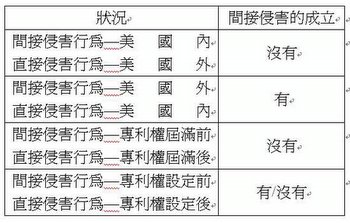【112
】【103
】發明所達成的功效與112
Case AQUATEX INDUSTRIES, INC., v. TECHNICHE SOLUTIONSThe district court based its nonenablement judgment on two grounds: (1) lack of utility or inoperability and (2) undue experimentation needed to carry out the invention.
【112
】The district court considered that "the first wafers processed with the Full Flow system appeared clean to the naked eye" but looked "filthy" viewed using laser scanning.
At the outset,
the district court erred in requiring that the patent disclosures enable a single embodiment, the Full Flow system, to meet TI’s commercial standards. In essence, the district court set the enablement bar too high. Enablement does not require an inventor to meet lofty standards for success in the commercial marketplace. Title 35 does not require that a patent disclosure enable one of ordinary skill in the art to make and use a perfected, commercially viable embodiment absent a claim limitation to that effect.
Title 35 requires only that the inventor enable one of skill in the art to make and use the full scope of the claimed invention.
Thus, when an invention claims a general system to improve the cleaning process for semiconductor wafers, the disclosure enables that invention by showing improvements in the overall system. See, e.g., Engel Indus., Inc. v. Lockformer Co., 946 F.2d 1528, 1533 (Fed. Cir. 1991) (“The enablement requirement is met if the description enables any mode of making and using the claimed invention.”). Of course,
if a patent claimed a system that achieved cleanliness up to a specified numerical particle-free range, then enablement would require disclosure of a method that enables one of ordinary skill to achieve that range without undue experimentation. Thus, the level of disclosure necessary to satisfy section 112 of title 35 varies according to the scope of the claimed invention. Durel Corp. v. Osram Sylvania Inc., 256 F.3d 1298, 1306-07 (Fed. Cir. 2001); In re Wright, 999 F.2d 1557, 1561 (Fed. Cir. 1993); In re Wands, 858 F.2d 731, 737 (Fed. Cir. 1988).
專利法112
要求 “enablement
”,但是應“enablement
”到什麼樣的程度?這就要視說明書中所聲稱之發明所達成的功效而定。因此,如果「if a patent claimed a system that achieved cleanliness up to a specified numerical particle-free range, then enablement would require disclosure of a method that enables one of ordinary skill to achieve that range without undue experimentation
」。故在寫發明所達成的功效時,最好僅是一般的描述,不要寫的太明確,不然所要求的“enablement
”程度也會變的很高。你能分清什麼是inoperative
?什麼是enablement
嗎?The district court essentially concluded that the invention claimed in the patents at issue simply did not work, that is, could not clean wafers, and therefore it would require undue experimentation to carry out the invention. See 35 U.S.C. § 101 (2000). This court has recognized the relationship between the enablement requirement of § 112 and the utility requirement of § 101. See, e.g., In re Swartz, 232 F.3d 862, 863 (Fed. Cir. 2000) (
"[I]f the claims in an application fail to meet the utility requirement because the invention is inoperative, they also fail to meet the enablement requirement because a person skilled in the art cannot practice the invention"); EMI Group N. Am., Inc. v. Cypress Semiconductor Corp., 268 F.3d 1342, 1348 (Fed. Cir. 2001). In this case, however, the district court similarly set the standard for utility too high for this invention. While the district court's major premise is correct that an inoperable invention is not enabled, the district court erred in its minor premise that the claimed invention is inoperable and lacks utility.
The inoperability standard for utility applies primarily to claims with impossible limitations. See, e.g., Process Control Corp. v. HydReclaim Corp., 190 F.3d 1350, 1359 (Fed. Cir. 1999) (claims found inoperable because they require violating the principle of conservation of mass); Newman v. Quigg, 877 F.2d 1575 (Fed. Cir. 1989) (claims to a perpetual motion machine ruled inoperable). Moreover, where a patent discloses several alternative combinations of methods (as most systems claims will), the party asserting inoperability must show that all disclosed alternatives are inoperative or not enabled. EMI Group, 268 F.3d at 1349. The '532 and '123 patents do not claim an impossible result or an inoperative invention.
Even if the single Full Flow embodiment does not achieve complete cleaning, that alone would not render the invention inoperative.
簡單地說成不符合utility requirement
【101
】就是不inoperative
;而不符合enablement requirement
【112
】 就是不enablement
,這樣解釋對嗎?【103
】(
obviousness requires a suggestion of all limitations in a claim). Therefore the examiner did not appear to resort to consideration of secondary considerations, such as the unexpected results and advantages in the quoted statements, to surmount the obviousness objection. In sum, the advantages advocacy was not as highly material as the district court seemed to think.
An applicant cannot prove unexpected results with attorney argument and bare statements without objective evidentiary support. See In re Lindner, 457 F.2d 506, 508 (CCPA 1972); In re Geisler, 116 F.3d 1465 (Fed. Cir. 1997) (
"attorney argument [is] not the kind of factual evidence that is required to rebut a prima facie case of obviousness"); In re Soni, 54 F.3d 746, 750 (Fed. Cir. 1995) ("It is well settled that unexpected results must be established by factual evidence. Mere argument or conclusory statements . . . [do] not suffice."
顯而易知性需要Claim
所有的限制條件都被暗示,另外光是用說的,還是無法克服prima facie case of obviousness
,需要有objective evidentiary support
。這讓我想到了有一次為客戶寫答辯搞,客戶聲稱他的發明的一個優點,可以卻又不提出實驗證據,不知該那件案子的審查委員會怎麼樣審那案子?事實上,用說的比較快,要做實驗的話真的很麻煩的,我很懷疑在現實的實務上,會僅為中間程序的處理而做實驗取數據,進行答辯。

